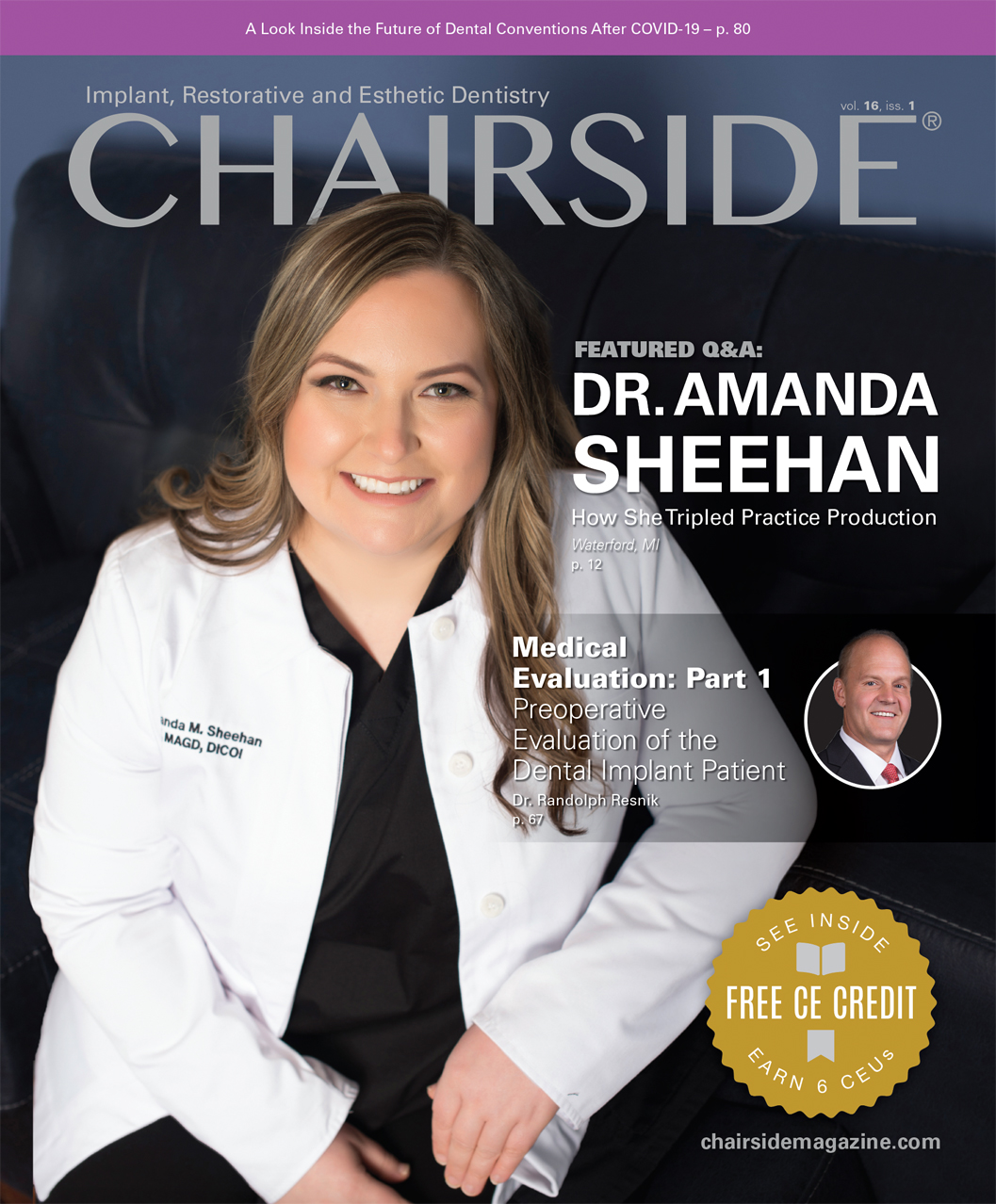A Look Into the Future of Dental Conventions After COVID-19
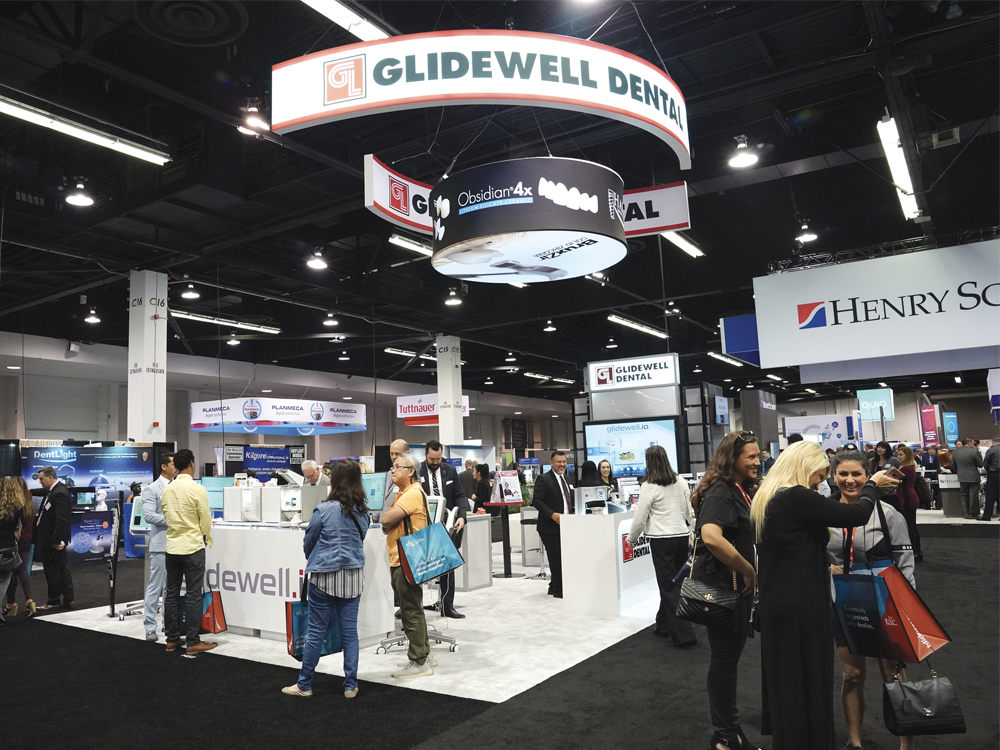
Dental professionals look forward to attending conventions for three main reasons: education, exploring new products and networking. With the COVID-19 crisis and the necessary cancellation of these meetings, leaders of dental associations have scrambled to recreate these benefits through new formats.
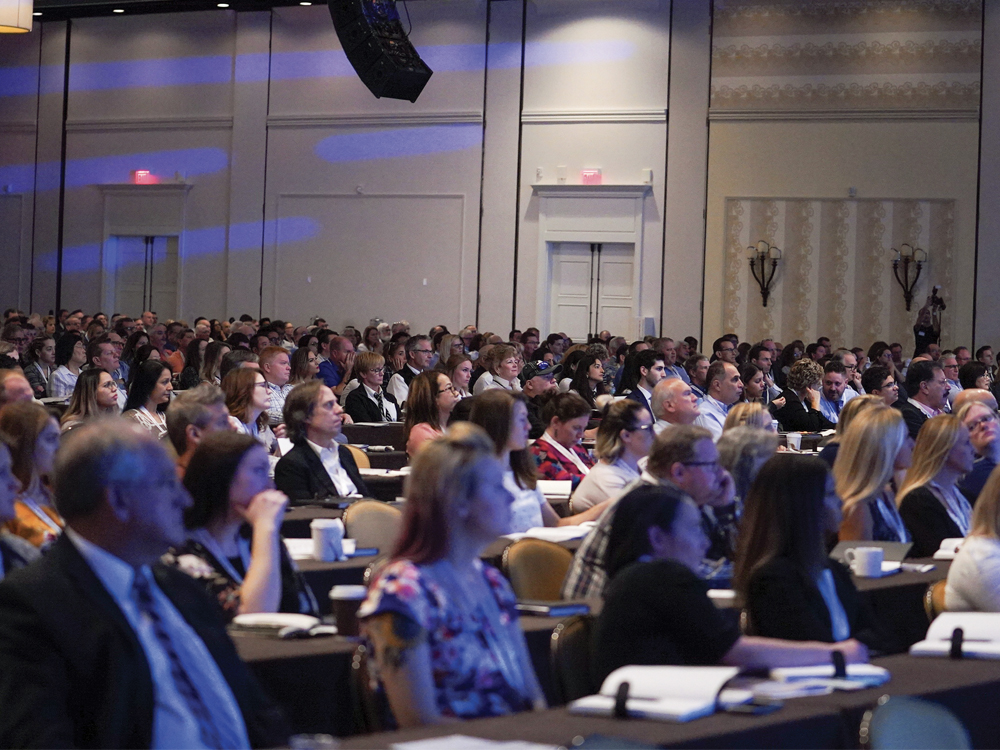
In-person conventions offer participants an opportunity to enhance their knowledge of dentistry, learn how to provide better patient care and establish more efficient workflows in their practices. Shown here, the Glidewell Symposium 2019 gathered over 1,000 dentists to share the latest clinical techniques, tools and technologies.
Education: In 2020, online education saw a surge in popularity, and several meetings, including the ADA, AGD and AAID, presented their educational content through virtual platforms. Although this may be the best alternative in the present situation, there will always be a need for in-person educational programming. While online educational programs can be engaging and offer excellent content when carefully planned, they cannot entirely replace the hands-on experience and personal mentoring of in-person training.
Dr. Robert Edwab, executive director of the Greater New York Dental Meeting, explains: “The virus has changed the meeting and event world for the foreseeable future. And while we believe that the Greater New York Dental Meeting will happen in person this year, these changes have enabled us to reimagine conventions and how to better engage doctors going forward, virtually and in person. Ultimately, dentists are always going to want to touch products and learn from hands-on experiences.”
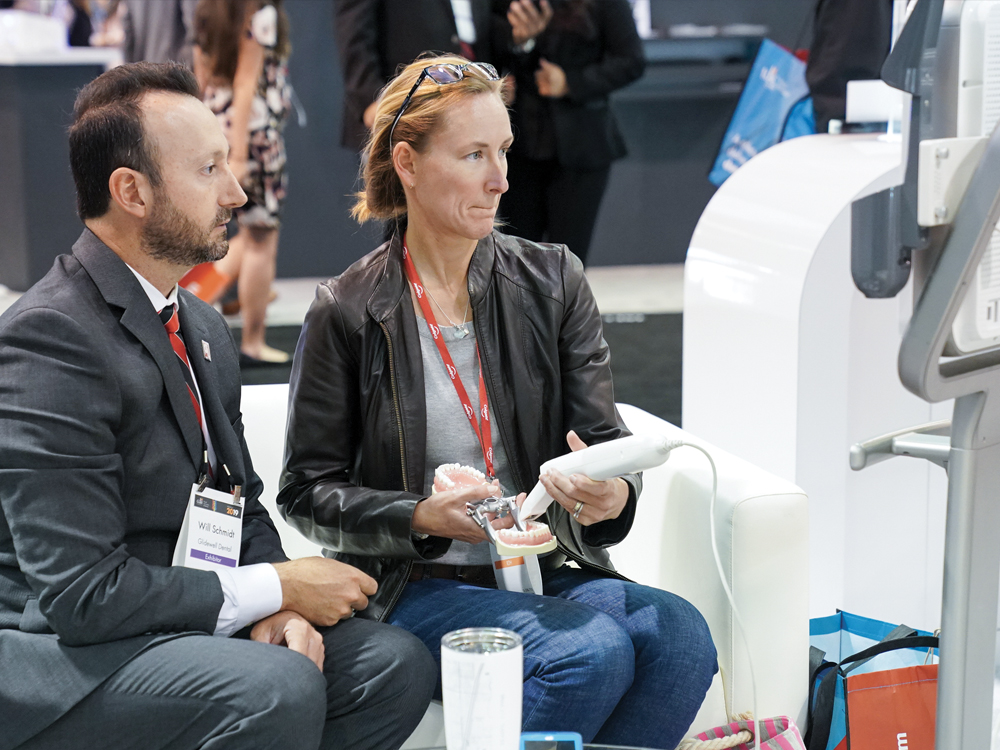
When making an investment through the purchase of a new dental device, it’s important to have all of the information in front of you, even the details of a similar device made by a different company in the next booth over. In-person conventions give buyers this opportunity to truly determine if a particular product is a good fit for their practice.
Exploring New Products: The pandemic has also altered how dentists learn about new products and technology. Conventions give dentists the opportunity to not only see, touch and try different products, but also to test ideas, exchange information quickly, and easily compare pricing between exhibitors. Just as with education, exploring products at a convention can include a unique type of hands-on experience that sets itself apart fromonline coursework. Doctors can experience the product for themselves and determine how it would best fit in their own practice.
In her approach to this year’s ADA SmileCon event taking place in Las Vegas this fall, Kathy Lovato, a senior manager of the convention, discusses how exploring products at conventions will hopefully be in person this year: “Extra health and safety protocols will be implemented to ensure a positive experience for all attendees and exhibitors. We will continue to offer dynamic speakers and hot-offthe-press content, but also focus on networking, team-building and inspiring our attendees.”
This push for an in-person convention comes after the ADA’s Virtual Connect Conference, as with all meetings forced to go virtual, saw a significant drop from their usual attendance. Without the ability to physically explore new products in person, dental professionals are less likely to participate.
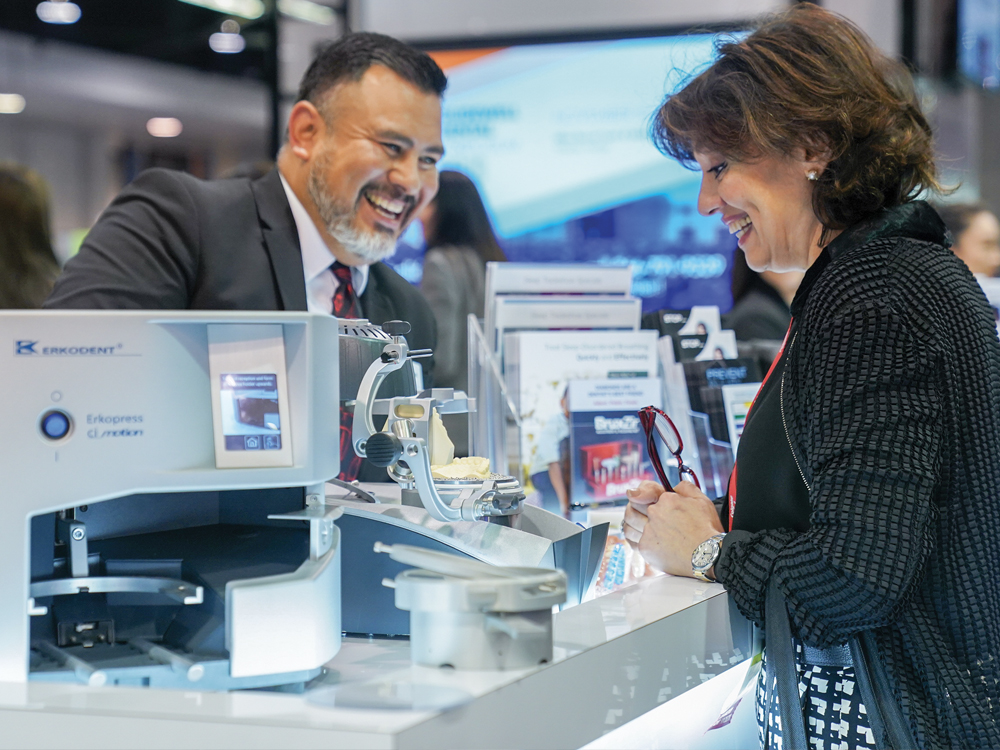
A virtual experience cannot compare to the fun and excitement convention attendees experience when they are together with their colleagues, sharing laughs and bonding over their shared passion for achieving better patient care.
Networking: The sense of community and camaraderie inherent in dental conventions is impossible to replicate in a virtual environment. Networking with colleagues is more than just a wave of recognition or a friendly smile: It’s about coming together and exchanging knowledge with like-minded individuals who share the same passion — and that is something that makes conventions vital to the existence of the dental community.
Before the initial surge of the pandemic, the CDS Midwinter Meeting was held in person from February 20–22, 2020, and drew nearly 29,000 attendees, including more than 6,000 dentists, to the city of Chicago. This year, however, the event will be virtual, with exhibits, lectures and courses offered online. While networking at such a large convention can be more difficult than at smaller events, moving it completelyonline will prevent attendees from meeting new people, discovering different practices from across the country and bonding with their own staff while visiting Chicago.
“Most dentists know what they are going to do before they arrive at a convention,” said Andy Klein, director of clinical education and events at Glidewell. “They know what classes they want to attend and what products they want to investigate. But there is a sense of anticipation as well, because conventions are where new products are showcased and they get to experience it for themselves. They want to give their patients better care, they want affordable products and services, and they want to learn. Dental conventions offer dentists a space to come together as one community.”
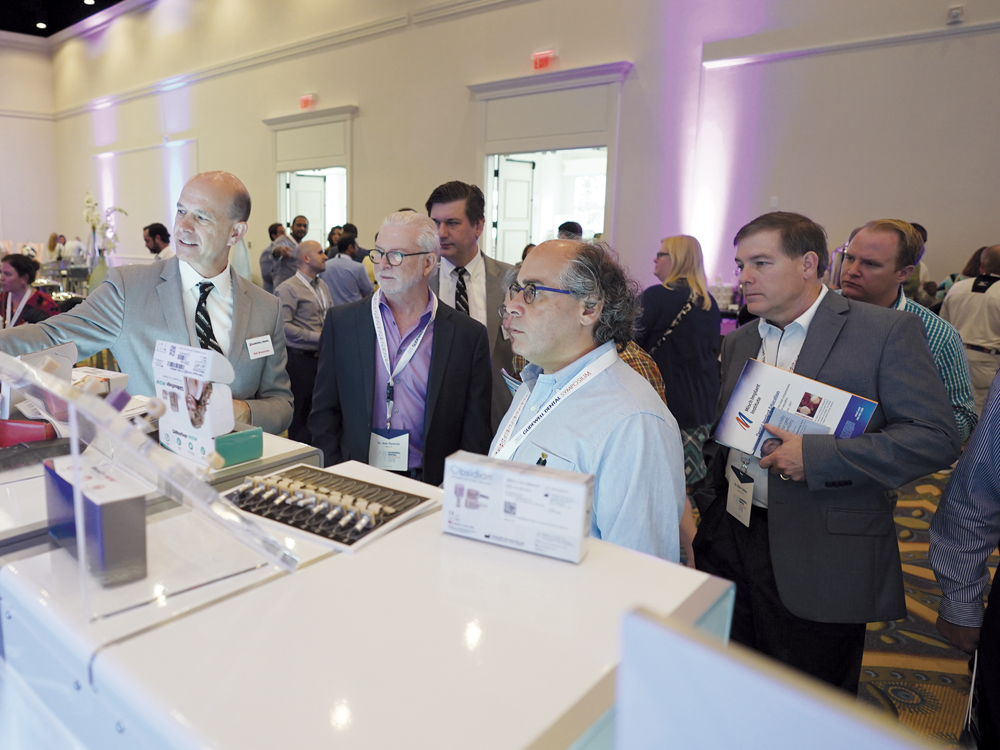
Networking is a natural result of in-person dental conventions that leaves online alternatives sufficiently lacking.
As the dental community continues to search for new ways of educating dental professionals, exploring new products and networking with colleagues, the interpersonal experience of dental conventions will always stand apart as events that simply can’t be replaced with an online format. While each attendee may travel to a convention for his or her own unique interests, they all have one thing in common: They are away from the office and the routine of daily life. There is anticipation and an expectation that they are going to experience something new and invigorating. COVID-19 removed that possibility in 2020 and left dentists with online interaction as the only substitute. Moving conventions to a virtual environment was a necessary safety precaution, but sitting behind a computer and logging on to a virtual convention pales in comparison to an in-person experience. Because they are not removed from their normal routine, their engagement online is significantly lessened and the experience is not as rewarding, as evidenced by the significant decrease in attendance for virtual events. The pandemic has taught the dental community that there’s simply no replacement for being together.

